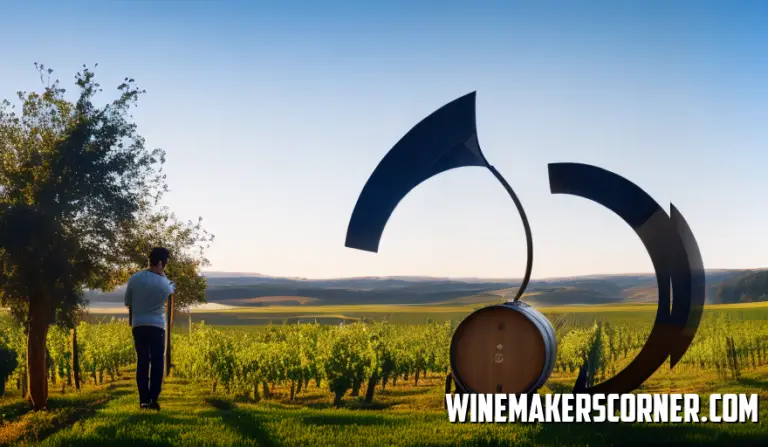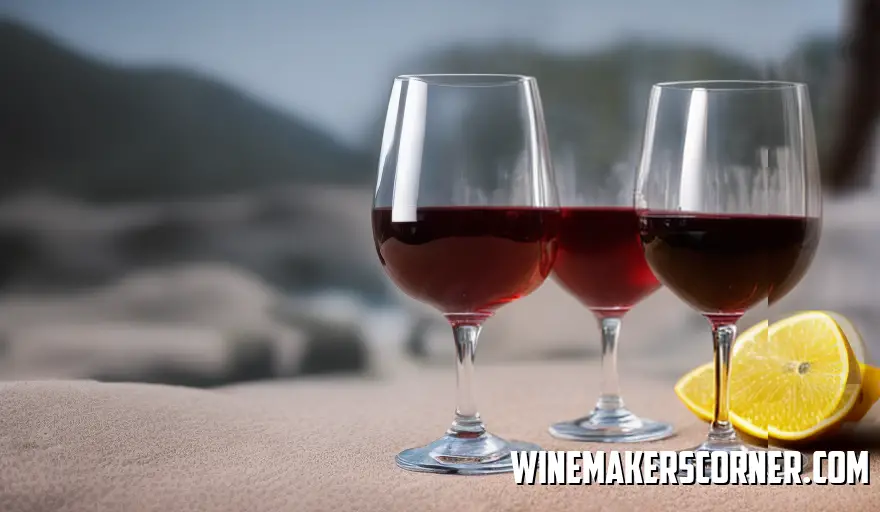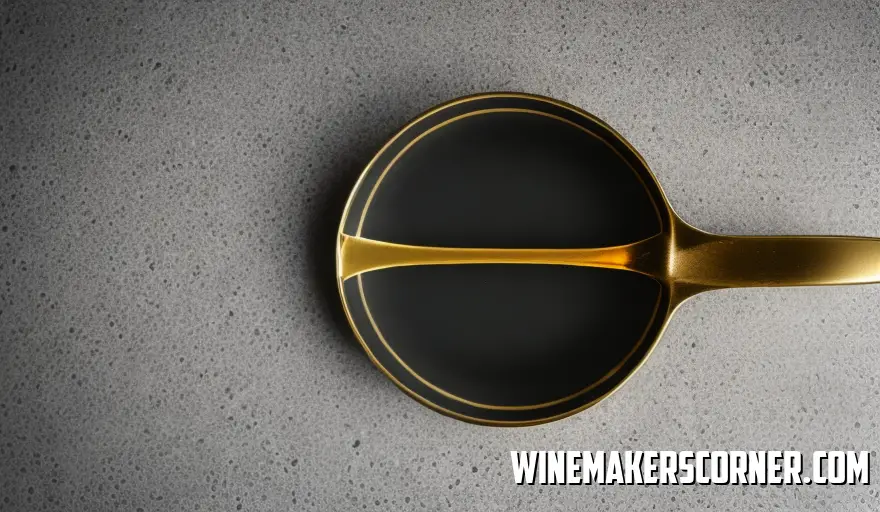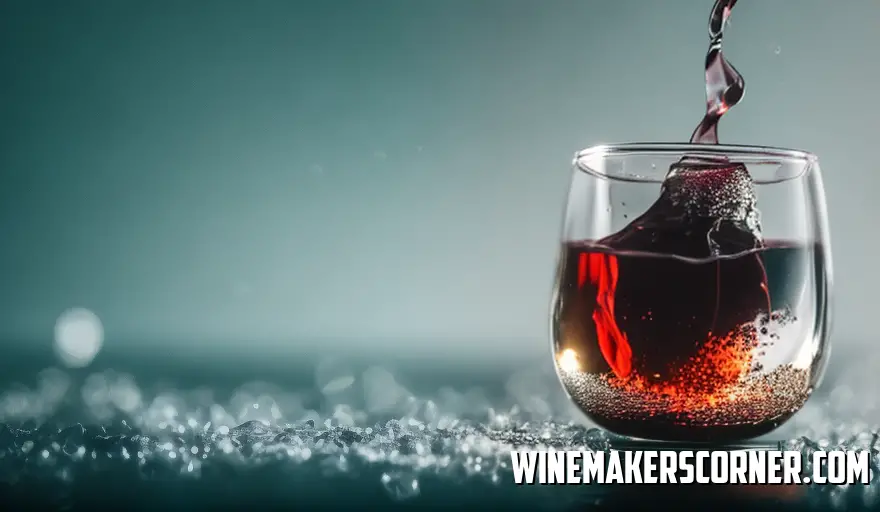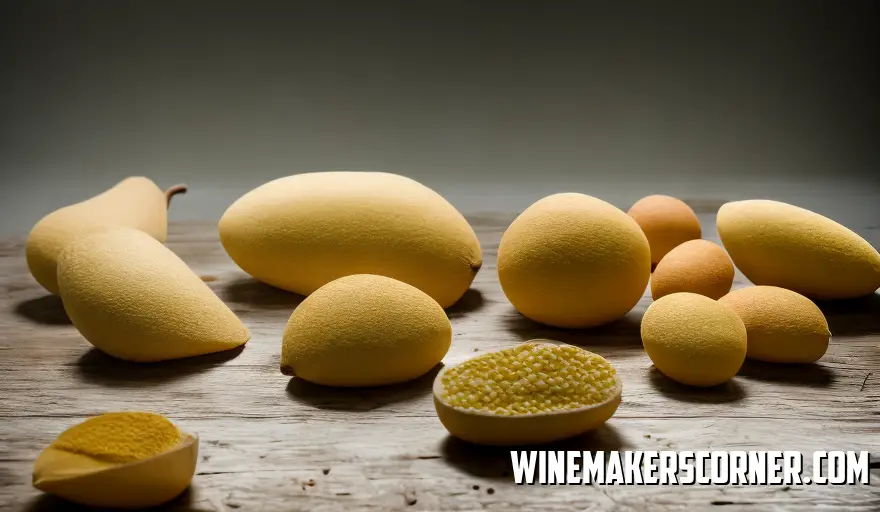The world of winemaking is an enchanting one indeed! It’s where history, culture, science, and art merge in perfect harmony to produce pure indulgence in every glass. For centuries vintners have been fascinated by the intricate dance between grapevines and fermentation – an unrelenting search for liquid gold that spans generations.
Whether you are an aspiring connoisseur or a budding viticulturist, come on an extraordinary literary adventure with us! From sun-drenched Tuscany vineyards to chilly climates’ terroirs in New Zealand, explore essential books that uncover the secrets behind each sip and transport you beyond time to where innovation meets tradition in each chapter!
So feed your curiosity and raise your glasses high as we journey through the timeless art of winemaking!
Table of Contents
The History and Culture of Winemaking
The journey of winemaking offers a captivating glimpse into society and culture across time and geography as ancient civilizations venerated this artform for centuries, and generations after generations passed down vital techniques which continue to shape the industry even today. The origin of wine production dates back more than 8,000 years ago in Georgia when early humans realized that fermenting grape juice could produce a most delightful beverage that stirred up refined tastes across regions helping trade prosper evermore since then as it traveled through different lands along with various cultures that influenced its growth along the way.
Ancient Egyptians were among the first to appreciate wine’s significance, especially when it came to religious rituals or medicinal properties, with Greeks further enhancing our understanding through viticulture practices still used actively in present-day settings leading up to Roman civilization, where improvements like exceptional pruning methods were developed alongside innovations like wooden barrel aging which set new standards for quality wines while shaping modern European winemaking culture as we experience it today.
As we journey through medieval Europe, monasteries became the most attractive centers for viticulture expertise. Since long ago, monks have diligently cultivated vineyards while perfecting their craft through experimentation with varied grape varieties. When European explorers set sail across vast oceans, they brought these same vines with them—founding vineyards in previously uncharted territories such as America, Australia, and South Africa.
Thriving in diverse climates and terroirs required perpetual adaptation for vintners.
As time has passed, science has increasingly contributed to the evolution of wine-making techniques—expanding our knowledge regarding fermentation processes while highlighting ideal soil compositions. Additionally, social influences have shaped regional styles like Frances’s strict adherence to its appellation system or Italy’s dedication to using only native grapes.
These days aspiring winemakers can discover this rich heritage through fundamental books that uncover various aspects of winemaking history and culture—which provides an indispensable foundation from which they can forge their distinct contributions to this ancient craft.
Viticulture: The Science of Growing Grapes
Winemaking is an intricate process where viticulture, the science of growing grapes, plays a pivotal role. Individuals dreaming of becoming great vintners must delve into this fascinating world, and in no time, they will realize that fine wine production starts in the vineyard. Understanding viticulture becomes crucial for generating exceptional wines due to its intricacy, from growing vines to winemaking.
Terroir remains vital as it covers soil type, climate, and topography – all influential factors on grape quality. Since each vineyard has unique terroirs, they all yield distinct flavors and characteristics in their grapes which individuals who master viticulture must recognize accurately. Choosing grape varieties also requires attention since thousands are available globally, while only some become prominent in winemaking. Hence vintners need careful selection matching them with suitable terroirs for optimal growth conditions that guarantee flavorful development opportunities. At the same time, pruning remains another critical aspect of grape cultivation, where removing excess shoots and leaves controls yield and enhances fruit quality.
Achieving a balance between vegetative growth and fruit production is what pruning strategies aim for across various regions. Pest management is a similarly crucial aspect of viticulture. The healthy being of grapevines can be significantly impacted by pests such as insects or diseases; therefore, prevention is critical.
Many winemakers integrate their pest management practices using biological, cultural methods, and chemical means called integrated pest management (IPM). This helps reduce environmental impacts while limiting the damage caused by pests significantly. Harvest time comes last but not least in viticulture – arguably the most critical stage for aspiring vintners! Time sensitivity plays a massive role when picking grapes since the wine’s taste profile may change drastically if picked too early or late at harvest time.
The perfect moment for harvesting grapes depends on monitoring sugar levels (also known as Brix), acidity levels (PH) weather patterns closely to ensure optimal results upon gathering them finally. In conclusion:
Becoming proficient in viticulture requires understanding several aspects of the venture, from terroir and grape varieties to pruning techniques and pest management. Thus putting the winemaker in a better position to produce stellar wines.
Winemaking truly comes alive with dedication, passion, and a commitment to continuous learning.
Wine Chemistry and Fermentation
Creating exceptional wines lies at the heart of winemaking; understanding processes like wine chemistry and fermentation are crucial aspects that enable vintners to do so. For those aspiring to succeed in this field, mastering these techniques is pivotal to realizing this goal. Through learning about winemaking science, numerous opportunities for experimentation arise that focus on enhancing wine flavor profiles.
Fermentation is at the root of this process – where sugar gets converted into alcohol by yeast – it shapes both alcohol content as well as determines wine taste & scent nuances uniquely. Every strain of yeast contributes different characteristics, which make choosing the right kind essential during production. Temperature control during fermentation carries significant weight; keeping things excellent yields gradual fermentation, preserving flavorful subtleties while higher temperature ranges accelerate it but at risk of sacrificing precious details or even spoiling batches entirely. Wine chemistry encompasses more than fermentation: acidity levels, tannins, sulfites phenolic compounds are all meaningful contributors that impact flavor profiles and overall quality in every bottle a vintner makes! To make wise decisions in the winemaking process, vintners must possess a comprehensive understanding of specific chemical elements. The acidity lends freshness to wines by harmonizing sweetness or bitterness levels. Aspiring winemakers are encouraged to measure acidity levels accurately and adjust them accordingly during production. This knowledge sharpens their skillset considerably. Tannins provide structure-texture in red wines alongside contributing towards enhancing their aging potential. These complex molecules originate from grape skins, stems, seeds, and oak barrels used for preservation. Vintners must carefully study all sources. Sulfites secure as preservatives prevent oxidation by checking bacterial growth preventing quality loss in wine. However, frequent utilization can have adverse effects on taste & allergies. Achieving almost perfect results needs striking a delicate balance. Finally, Phenolic compounds add complexity, color & most importantly, antioxidant properties which significantly influence wine’s overall character. Thus aspiring vintners need complete mastery over wine chemistry & fermentation processes to bring out the best of all elements.
The Art of Blending and Tasting
Nothing is more critical in winemaking than the artistry behind blending & tasting wines. Vintners who master these skills hold unrivaled power over how wines taste. But how do they do it? Blending involves creativity & precision- where different wines are combined thoughtfully & harmoniously.
It takes intuition backed by extensive knowledge of grape varietals terroir, fermentation techniques, and acidity tannins while considering aroma profiles and other factors. Tasting is an equally important aspect of winemaking mastery. Developing a refined palate is a learned skill- training your brain to identify subtle flavors like blackberry, currant, or hints of vanilla helps make better-informed decisions during blending. Expert literature on blending and tasting techniques should not be ignored for further refinement! Becoming an esteemed winemaker requires mastering the intricacies of blending and tasting – two arts that require years of practice to perfect. Fortunately, aspiring vintners can gain a wealth of knowledge through reputable sources like “The Art & Science of Wine” by James Halliday & Hugh Johnson, “The Wine Bible” by Karen MacNeil, and “Understanding Wine Technology” by David Bird.
These books contain gems that can assist readers in developing a refined palate while elevating their blending skills beyond imagination. The ultimate payoff? Creating unforgettable wines packed with flavor notes so divine they seem almost otherworldly.
Wine Regions Around the World
Wine regions offer a captivating view into the nuances of winemaking: rich in history, culture, and unique terroirs that produce flavors and aromas unlike anything else on earth. As someone aspiring to become an expert vintner looking to expand your knowledge base while bolstering creativity exploring these regions is an absolute must-do experience. Frances Bordeaux region tops our list for reasons that hardly need explanation – it’s synonymous with some of the world’s best wines! With more than 7,000 châteaux producing fantastic Cabernet Sauvignon and Merlot selections, among others, it’s undeniable why Bordeaux holds such a high reputation.
Not far from there lies Burgundy, which produces elegant Pinot Noirs and Chardonnays grown in soils rich with limestone – creating exceptional standouts.
Italy also has much to offer; Tuscany boasts picturesque landscapes alongside exceptional wines like Chianti Classico, made from Sangiovese grapes. Piedmont is equally impressive, producing famous Barolo and Barbaresco wines from Nebbiolo grapes.
For those who love Spanish wine Rioja is the pinnacle of wine-producing areas with its distinct winemaking methods and exquisite blends of Tempranillo grapes mixed with other varietals; this region is bound to impress even the most discerning palates. The Tempranillo grape is king around these parts and produces complex red wines with fantastic aging potential. Head to Priorat if you’re interested in sampling unique blends made from native Garnacha and Cariñena grapes grown on steep terraces.
Californias Napa Valley’s Mediterranean climate provides ideal conditions for cultivating bold Cabernet Sauvignons and other varietals like Zinfandel and Chardonnay. Across South America lies Argentinas Mendoza province, famous for its high-altitude vineyards producing intense Malbecs with concentrated flavors. Chiles Central Valley similarly excels in Cabernet Sauvignons while experimenting with Carménère, a grape variety almost lost forever in Europe.
Australia boasts an incredibly diverse wine landscape ranging from Barossa Valley Shiraz to cool climate Tasmanian Pinot Noir while New Zealand showcases its world-renowned Marlborough Sauvignon Blancs. South Africa’s Western Cape region has a centuries-old winemaking tradition, giving rise to famous areas such as Stellenbosch and Paarl.
Chenin Blanc and Pinotage are among the most noteworthy wines produced in this picturesque locale. When studying global wine regions like this one, it’s possible to gain an invaluable understanding of terroir, grape varieties, and winemaking practices that can contribute significantly to one’s appreciation for the beverage and their ability to create it as an aspiring vintner.
To further delve into this fascinating topic, check out some of the essential books recommended within this article’s text.
Mastering Winery Management
Ruling the winery market isn’t easy, but it’s a journey worth taking for those with a supercharged passion for it all. To become an exceptional vintner, you must explore every nook and cranny of viticulture (the backbone of the grape growing industry) and enology (the science behind making wine) and develop essential business skills required for staying ahead in this ever-evolving sector. Being world-class at crafting wines that people can’t get enough of involves mastering each aspect of running your operation effectively. There’s much to learn in viticulture: from grape varieties to managing vineyards and understanding terroir nuances, all bare essentials when aiming to produce outstanding wines.
Temperature also plays a critical role; hence, knowing what to do from bud break till harvest makes healthy vines yield excellent fruit.
Once you’ve sharpened your viticulture knowledge base, moving on to enology gets even more interesting as you delve into fermentation processes and barrel aging techniques while perfecting your blending skills with precision acquired through years of practice. But creating fine wine is just half the story today – being successful in this highly competitive market requires mastering business acumen as well so that winery managers can stay ahead always.
Certain vital factors can’t be overlooked to succeed in the winery industry. Marketing strategies, financial planning, and effective team leadership are all necessities for thriving in this field. One way to gain a strong foundation in these areas is by delving into comprehensive educational resources.
As an aspiring vintner, it’s essential to find resources that can offer valuable insights on viticulture and enology; there are several books out there that fit the bill – for example, “The Science of Wine: From Vine to Glass” by Jamie Goode or “Wine Grapes: A Complete Guide to 1,368 Vine Varieties” by Jancis Robinson et al. But it’s not just about the science behind winemaking – mastering managerial skills is also crucial.
To hone your skills in this area, consider reading books like “Winery Management: Business Strategy & Operations” by James Lapsley or “Successful Wine Marketing” by Kirby Moulton et al., which focus on marketing strategies and overall business management.
Ultimately becoming a successful vintner means combining artistry with science and business acumen.
Immersing yourself in every aspect of the winemaking process and seeking out educational resources will help you enhance your knowledge and skills. By exhibiting devotion, enthusiasm, and a hunger for knowledge, it’s possible to elevate your winery into a thriving establishment.
Organic and Biodynamic Winemaking Practices
Organic and biodynamic winemaking methods are increasingly popular among aspiring vintners, offering an eco-friendly approach to producing exceptional wines. Organic viticulture involves forgoing synthetic chemicals such as pesticides or herbicides while utilizing natural alternatives like composting or cover crops to enhance soil fertility for improving biodiversity within vineyards.
On the other hand, biodynamics views vineyards holistically, where cosmic forces dictate planting schedules while lunar cycles regulate crucial decisions by vintners; additionally, biodynamic preparations composed of natural sources like plants or minerals improve soil quality ensuring vine health.
As a result of this approach, wines express their terroir with remarkable clarity; each bottle embodies distinctive characteristics from its origin, making it unique for wine enthusiasts to enjoy fully savoring them through their sense of place captured in every drop. Several books provide deeper insights into both organic and biodynamic winemaking practices.
3.
Expert Monty Waldin simplifies complex concepts and shares actionable advice on implementing biodynamic techniques in his book “Biodynamic Wine.” “Organic Wine: A Marketer’s Guide” by Katherine Cole examines trends behind organic wine sales while offering marketing strategies for eco-conscious brands. Isabelle Legeron MW’s “Natural Wine” explores the qualities that differentiate natural from conventional wines, complete with tasting notes and producer profiles from around the globe. Uncovering the organic and biodynamic winemaking world can lead aspiring vintners toward producing unique wines with minimal ecological footprints. By ingesting key texts within this realm, aspiring vintners can discover innovative methods for crafting extraordinary wines that respect nature and heritage.
Wine Marketing and Sales Strategies
Winemaking can be considered an art form; however, selling and marketing it demands equal prowess. Prospective vintners need to know various wine marketing and sales strategies to help establish their presence in this fiercely competitive market while simultaneously enhancing their winemaking journey.
Recognizing target audiences becomes crucial when devising one’s promotional approach towards various segments like connoisseurs, millennials, or casual drinkers.
The power of storytelling remains another essential component in wine marketing- each bottle should convey its unique creation tale- from grape variety to terroir and production methods used while making it.
Social media platforms such as Twitter, Instagram, or Facebook are excellent channels for promoting wines and generating brand awareness by engaging directly with consumers who will eventually become loyal followers sharing their enthusiasm for these products. Expanding visibility and increasing opportunities for sales necessitates forming partnerships with local restaurants or bars – showcasing wines through food pairing events or exclusive promotions targeting specific clientele are effective ways of achieving these goals.
Attending trade shows & wine competitions not only magnifies exposure among prospective buyers but also establishes industry credibility; winning awards at prestigious events solidifies the reputation of one’s brand and indicates its superior quality standards. Exceptional customer service secures long-lasting relationships with both consumers & retailers – addressing concerns promptly, exceeding expectations & providing satisfactory resolutions contribute positively towards word-of-mouth recommendations endorsing your product. By mastering marketing & sales strategies, any aspiring vintner can successfully showcase their passion for winemaking & lay the foundation for a successful business.
